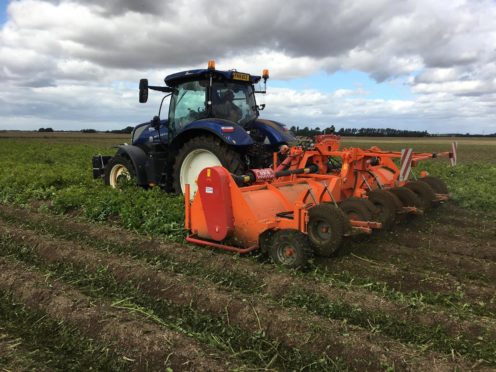Potato growers have been warned of an increased risk of virus and disease in crops following the loss of diquat as a desiccant.
Levy body AHDB said trials had shown the slower burndown achieved by the chemical and mechanical alternatives to diquat mean green stems and leaves can still be present three weeks after desiccation sprays.
It said even very small amounts of this green material remain a viable target for virus-carrying aphids and diseases, such as blight and gangrene.
“Not all growers will be thinking about virus threat when desiccating, but you can find aphids in green regrowth up to three weeks after your T1 spray,” said Eric Anderson from Scottish Agronomy, who is leading desiccation trials at AHDB’s Scottish potato monitor farm at Milton of Mathers, near Montrose.
“Even for ware and processing growers, the presence of green leaves and stems means the threat of foliar and tuber blight, which needs to be managed.”
He said the main challenge to ware growers was achieving adequate skinset, and research has shown this is possible without diquat provided guidance is followed.
The guidance asks growers to stop irrigation seven days before desiccation, and to aim for an early to mid-morning application of desiccants, ideally on a sunny day. Lastly, growers are asked to adjust their schedule because there is between a one and four-day delay to skinset with chemical desiccation.
